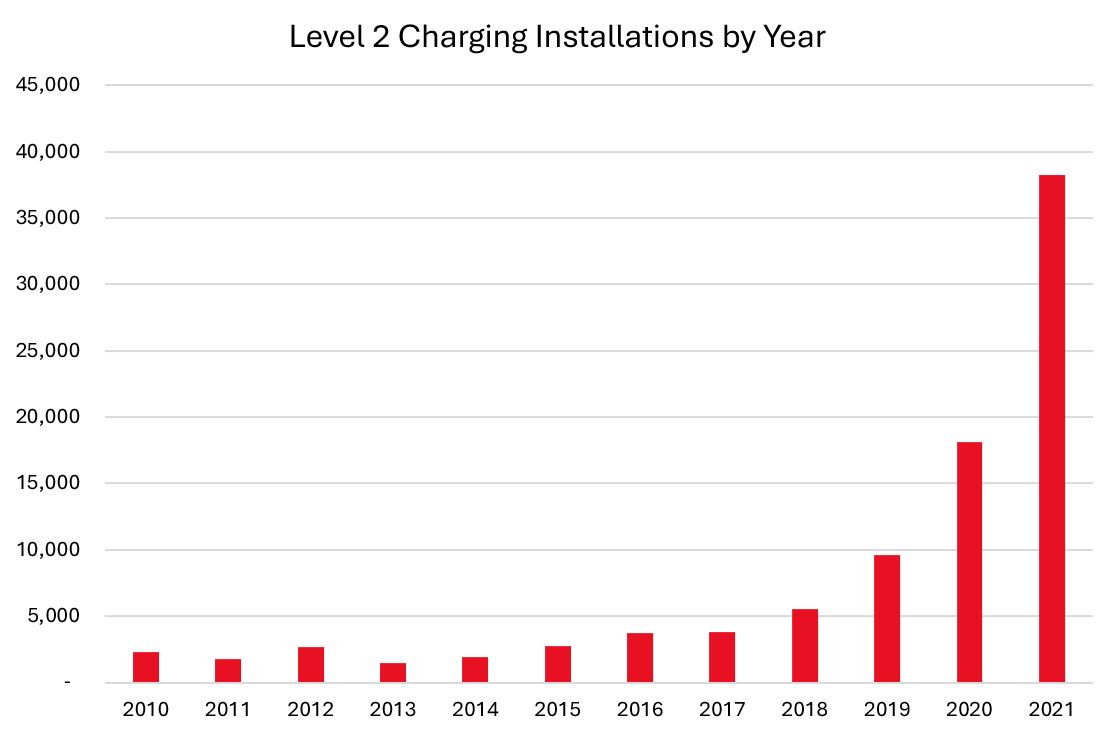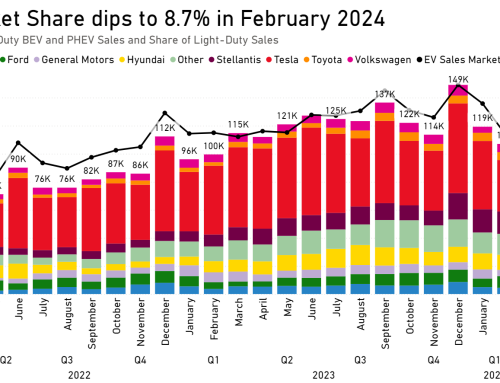
This data includes public and workplace charging by year. Source: EV Charging Deployment on EV Hub.
The National EV Charging Summit was held last week. The Summit drew attention to the need for public charging across the country. Nick Nigro, founder of Atlas, hosted a panel on charging needs. He showed a clever data animation on the short history of funding for EV charging.
So, what does the data say about public and workplace EV charging around the country in 2021?
In 2021, 43,275 new public charging ports were installed. Of those, 36,192 were level 2 (L2) chargers and the rest (7,083) were DC fast chargers (DCFC). There were also more than 2,200 workplace charging ports installed in 2021, the vast majority of which were L2 ports. There are now 126,193 public and workplace charging ports installed across the country meaning that 36 percent of all chargers were installed in 2021.
At a first glance, the charging story in 2021 is simple: California and ChargePoint. California dominates all states and ChargePoint dominates all charging providers for 2021. That is, until you start to turn the data over.
Looking at DCFC alone, EVGo (1,674 ports) and Tesla (2,924 ports) led all others in 2021. No other charging provider cracked 1,000 ports. In short, charging providers are taking very different approaches. SemaCharge, for instance, installed more than 2,800 L2 chargers in 2021, but not a single DCFC. EVGo took the opposite route, installing more than four times as many DCFC as L2 chargers. Similarly, Electrify America has lent into DCFC, installing more than 900 DCFC but just 29 L2 in the same year. Tesla is the starkest of all with 2,924 DCFC and just a handful of L2 ports.
The story is even more complicated at a state level. In 2021, on a per capita basis, Vermont and Washington, DC both installed more L2 chargers than California. On DCFC however, California leads the way closely followed by Oklahoma and Wyoming.
We know from survey data that access to public charging is crucial for consumers to feel confident in purchasing an electric vehicle. It is also becoming clear that the answer is not to simply recreate a network of EV charging that looks like our gas station network. As James R. Walkinshaw, a member of the Fairfax County Board of Supervisors, argued in a Washington Post op-ed last week, the key question is: “How many public gas pumps would we need if most of us had gas pumps at home or at work?” As he notes, this question must be tailored to ensure that communities with low access to private charging are able to access affordable and convenient public charging.
The Infrastructure Investment and Jobs Act set aside $5 billion for formula grants to fund a public EV charging network and funding for states to maintain that network. There is an additional $2.5 billion in competitive grants in the bill to support EV charging (as well as hydrogen and propane fueling). Further, one element, simply named “Standards”, requires nonproprietary chargers and open access payment. It is a safe bet that the growth in EV charging we saw in 2021 is just the start.


